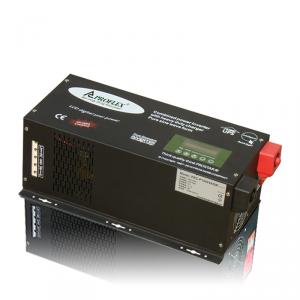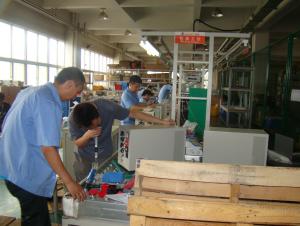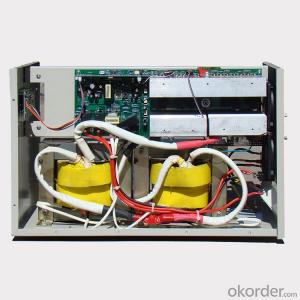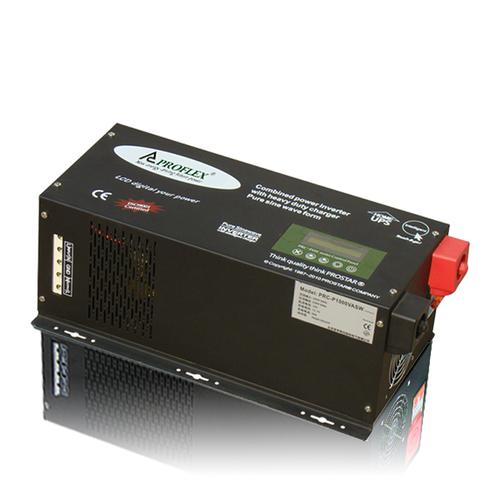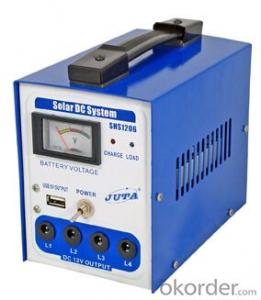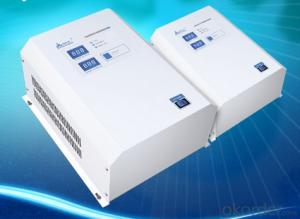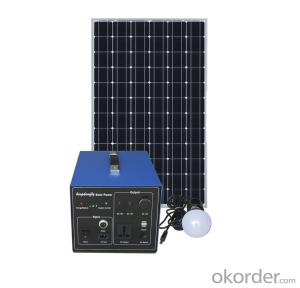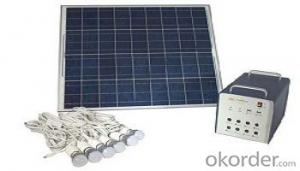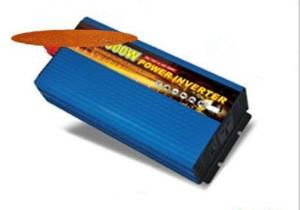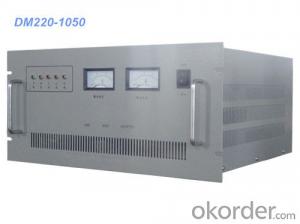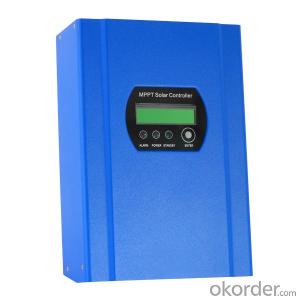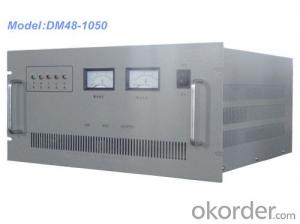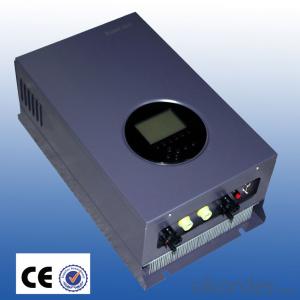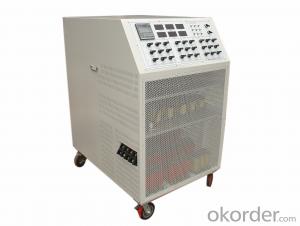Baywa Re Solar Energy Systems - Pure Sine Wave Power Inverter with Battery Charger 5KW
- Loading Port:
- Tianjin
- Payment Terms:
- TT OR LC
- Min Order Qty:
- 10 pc
- Supply Capability:
- 10000 pc/month
OKorder Service Pledge
OKorder Financial Service
You Might Also Like
Specification
Specifications
DC to AC power inverter
Pure sine wave
with battery charger
standard LCD display
Battery charge current can be manually set
DC TO AC INVERTER
PURE SINE WAVE WITH BATTERY CHARGER
Advantages
> Ultra-fast transfer timeFrom AC to DC less than 5ms,
> From DC to AC 0ms (Routers, Switches PC, Servers and ATM machine will never re-start at Mains failure)
> Faster battery recharge time (Big charge current 30A~50A)
> Automatic tracking mains or generator input (Tracking input voltage, phase & frequency)
> AC / DC conversion waveform (Seamless connection without any spike)
> Battery equalization system (for longer battery life)
> Protection against short-circuit, low voltage, overload, over temperature and over-charge
> Low maintenance cost, LED & LCD Dual display
Application range
Computer, Telecom, Deep Freezers, Air Conditioners, Petrol pump machines, Small Scale Industries Malls, Hotels,
Restaurants, Banks, ATM Machines, Clinics, All kinds of Kitchen appliances & Home appliances, Weighing bridges,
Elevators etc.
Technical Specification
| PRC-PSW SERIES | 500VA | 1000VA | 1500VA | 2000VA | 3000VA | 4000VA | 5000VA | 6250VA |
| POWER CAPACITY | 400W | 800W | 1200W | 1600W | 2400W | 3200W | 4000W | 5000W |
| BATTERY DC VOLTAGE | 12V/24V/48V | 24V/48V | ||||||
| INPUT AC RANGE | 140~280V / 45~55Hz | 165~275V / 45~55Hz | ||||||
| INVERTER OUTPUT | 220V ± 10% / 50Hz ± 1% | Without AVR function | ||||||
| TRANSFER (AC LOSS) | 5ms after AC loss, automatic recovery after utility power back | |||||||
| WAVE DISTORTION | THD < 3% | |||||||
| OVER LOAD CAPACITY | 100% ~ 125% Keep Beeping; > 125% working 30s; >150% 1s shut down | |||||||
| OUTPUT SOCKET | terminal connectors | |||||||
| INDICATOR STATUS | Utility input with "POWER" & "BYPASS" light on | |||||||
| Utility power loss with "INVERTER" light on | ||||||||
| Connected with load "AC OUTPUT" light on | ||||||||
| Warning for battery low & over load with " ! " flashing | ||||||||
| Battery low protection, over load protection, short circuit protection with " ! " light on | ||||||||
| BATTERY CAPACITY | From left to right 4 indicator means 100%, 75%, 50%, 25% (" ! "Flashing) | |||||||
| CHARGE STATUS | Indicator flash change from 50% →75% → 100% every 1second means "CONSTANT CURRENT" | |||||||
| Indicator flash change from 50% →75% → 100% every 2second means "CONSTANT VOLTAGE" | ||||||||
| Indicator 50%/75%/100% 3lights on means "FLOAT CHARGE" & battery full | ||||||||
| CHARGE CURRENT | Maximum 12V 30A / 24V 20A / 48V 10A | Maximum 24V 50A or 48V 30A | ||||||
| 10A → 20A → 30A Adjustable | 10A → 30A → 50A Adjustable | |||||||
| RECHARGE TIME | 8~10hours | |||||||
| POWER EFFICIENCY | 88% at full load | 85% at full load | ||||||
| NOISE CONDITION | < 45dB | |||||||
| TEMPERATURE | —10°C ~ 40°C (Operation environment); —20°C ~ 50°C (Stock environment) | |||||||
| HUMIDITY | 0~95% no condensation | |||||||
| SIZE OF INVERTER | 550 x 250 x 200mm | 650 x 250 x 200 mm | 68x31x28cm | |||||
| SIZE OF PACKAGE | 58x28x23cm / 1unit | 68x28x23cm / 1unit | 71x34x31cm | |||||
| TYPE OF PACKAGE | Honeycomb carton | |||||||
| WEIGHT OF INVERTER | 11kg | 13kg | 14kg | 25kg | 27kg | 38kg | 39kg | 47kg |
| WEIGHT AFTER PACKAGING | 13kg | 15kg | 16kg | 27kg | 29kg | 40kg | 41kg | 49kg |
Advantages
CPU control, Low frequency
Pure sine wave output
5ms transfer time for AC to DC
Input voltage range 80V~140V/160V~265V
Input frequency range 45~55Hz/55~65Hz
Easy to install, easy to use
Intelligent automatic charging
Compatible with generators
Using line interactive circuit technology
Automatically AC bypass
Software & SNMP card optional with adding cost
Electronic Protections
Overload, short circuit protection
Over temperature protection
Over voltage, low voltage protection
Low battery protection

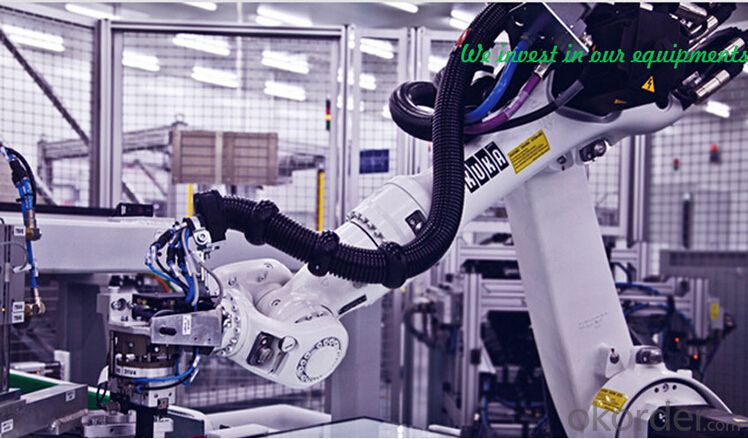
- Q: How does shading affect the performance of a solar energy system?
- Shading can significantly impact the performance of a solar energy system as it reduces the amount of sunlight reaching the solar panels. Even a small amount of shading on a single panel can decrease the overall energy output of the system. It is crucial to minimize shading, as it can lead to decreased efficiency, lower energy production, and reduced overall system performance.
- Q: What is the role of inverters in a solar energy system?
- The role of inverters in a solar energy system is to convert the direct current (DC) generated by solar panels into alternating current (AC) electricity that can be used to power homes, businesses, or be fed back into the grid. Inverters also regulate the voltage and frequency of the electricity to ensure compatibility with electrical devices and the grid.
- Q: Can solar energy systems be installed on religious institutions?
- Yes, solar energy systems can be installed on religious institutions. Many religious institutions have embraced solar energy as a sustainable and environmentally friendly solution to meet their energy needs. Installing solar panels on religious buildings not only helps reduce their carbon footprint but also allows them to save on electricity costs in the long run. Additionally, it aligns with the values of stewardship and care for the environment that many religious faiths promote.
- Q: Can solar energy systems be used for powering shopping malls or retail centers?
- Absolutely, shopping malls and retail centers can definitely utilize solar energy systems to power their operations. In fact, numerous shopping malls and retail centers worldwide have already embraced solar energy systems to meet their energy requirements. These establishments can install solar panels on their rooftops or in parking lots to capture sunlight and transform it into usable electricity. There are numerous advantages to using solar energy systems in shopping malls and retail centers. Firstly, they offer a consistent and reliable source of clean and renewable energy. This decreases reliance on fossil fuels, reduces carbon emissions, and contributes to a more sustainable future. Additionally, solar energy systems can significantly reduce energy costs for these establishments. Once the initial installation costs are covered, the electricity generated by solar panels is essentially free. Furthermore, solar panels can be seamlessly integrated into the architectural design of shopping malls and retail centers, providing a visually appealing and distinctive feature. This can enhance the overall aesthetic appeal of the buildings and attract more customers. Additionally, solar panels can provide shade in parking lots, protecting vehicles from direct sunlight and minimizing the need for air conditioning. However, it is important to consider various factors such as available space, local regulations, and financial considerations when determining the feasibility of installing solar energy systems in shopping malls or retail centers. Effective planning and design are crucial to ensure optimal utilization of solar energy and maximize the associated benefits. All in all, solar energy systems offer a practical and sustainable solution for powering shopping malls and retail centers. Their adoption not only reduces environmental impact but also provides long-term cost savings and promotes a positive brand image for businesses.
- Q: What is the role of solar energy tracking systems?
- Solar energy tracking systems are specifically designed to maximize the efficiency and output of solar panels by ensuring they always face the sun at the most advantageous angle. These systems utilize sensors and motors to monitor the sun's movement throughout the day and make necessary adjustments to the position of the solar panels. The primary objective of solar energy tracking systems is to maximize the amount of sunlight that reaches the solar panels. By continuously monitoring the sun's movement, these systems guarantee that the panels are constantly perpendicular to the sun's rays, capturing the greatest possible amount of solar energy. This results in increased energy production and enhanced overall system efficiency. Furthermore, solar energy tracking systems can have a significant impact on total energy output throughout the year. By tracking the sun's position and adjusting the tilt and azimuth of the solar panels, these systems can optimize energy production during different seasons and at various latitudes. This adaptability is particularly valuable in locations that experience substantial variations in sunlight intensity and angle throughout the year. Apart from maximizing energy production, solar energy tracking systems also offer additional advantages. For instance, by distributing stress and heat evenly across the solar panels, they can prolong the panels' lifespan and enhance their durability. Moreover, these systems can reduce the amount of land required for solar installations, as they allow for higher power density per unit area. Overall, solar energy tracking systems play a vital role in improving the efficiency, output, and longevity of solar energy systems. By continuously tracking the sun's movement, these systems optimize energy production, increase system efficiency, and ultimately contribute to the wider adoption of renewable energy sources.
- Q: Can solar energy systems be used for powering hotels?
- Yes, solar energy systems can certainly be used for powering hotels. Solar panels can be installed on the rooftops or surrounding areas of hotels to harness sunlight and convert it into electricity. This renewable energy source can help hotels reduce their reliance on traditional grid electricity, lower operational costs, and contribute to a more sustainable and eco-friendly approach to power generation.
- Q: Can solar energy systems be used for powering off-grid recreational vehicles?
- Yes, solar energy systems can be used to power off-grid recreational vehicles. Solar panels can be installed on the roof of the vehicle to capture sunlight and convert it into electricity. This renewable energy source can charge the RV's batteries, providing power for various appliances and systems while being independent of traditional power sources.
- Q: How do solar energy systems impact the energy poverty gap?
- The energy poverty gap can be significantly reduced through the implementation of solar energy systems, which offer clean and affordable electricity to those without access to reliable energy sources. Energy poverty affects millions worldwide, referring to the absence of electricity and modern energy services. Solar energy systems possess a key advantage in their ability to generate electricity in a decentralized manner. This makes them ideal for off-grid and rural areas that face challenges and high costs in connecting to the traditional power grid. These systems are easily installed and can be customized based on the specific energy needs of a community or household. By utilizing solar power, these systems provide a sustainable and dependable source of electricity, lessening the reliance on expensive and environmentally harmful fossil fuels. Consequently, individuals and communities are relieved of financial burdens, as solar energy becomes free after installation. Moreover, solar energy systems have the potential to drive economic development in energy-poor regions. Access to electricity enables the establishment of small businesses such as mobile phone charging stations, refrigeration units for perishable goods, and even micro-grids to power communal services like schools and healthcare facilities. These economic activities create job opportunities and enhance overall quality of life. In addition to economic benefits, solar energy systems contribute to environmental sustainability. By generating electricity from renewable sources, they reduce greenhouse gas emissions and combat climate change. This is particularly significant for energy-poor communities reliant on kerosene lamps or diesel generators, which emit harmful pollutants and contribute to air pollution. In conclusion, solar energy systems play a crucial role in bridging the energy poverty gap by offering clean, affordable, and sustainable electricity to those lacking access to modern energy services. They provide a decentralized and scalable solution that fosters economic development, improves quality of life, and promotes environmental sustainability.
- Q: Are there any maintenance requirements for solar energy systems?
- Yes, solar energy systems do have some maintenance requirements. These include regular cleaning of the solar panels to remove dirt and debris, checking for any damages or malfunctions, and ensuring proper electrical connections. Additionally, monitoring the system's performance and assessing its efficiency is necessary to ensure optimal functioning. Overall, while solar energy systems are low-maintenance compared to other energy sources, regular inspections and basic upkeep are essential for their longevity and effectiveness.
- Q: How do solar energy systems impact air conditioning costs?
- Solar energy systems can significantly reduce air conditioning costs by providing a renewable and cost-effective source of power. By harnessing the sun's energy to generate electricity, solar panels can power air conditioning units directly, eliminating or reducing the need for grid electricity. This can result in lower energy bills and reduced dependence on fossil fuels, leading to a more sustainable and environmentally-friendly cooling solution.
Send your message to us
Baywa Re Solar Energy Systems - Pure Sine Wave Power Inverter with Battery Charger 5KW
- Loading Port:
- Tianjin
- Payment Terms:
- TT OR LC
- Min Order Qty:
- 10 pc
- Supply Capability:
- 10000 pc/month
OKorder Service Pledge
OKorder Financial Service
Similar products
Hot products
Hot Searches
Related keywords
